As you'll have seen from the introductory pages and the catalogue, this collection was built up in the town of Cromer, Norfolk (that's Norfolk in England). At the heart of the collection is a set of slides of local scenes, mainly of the town itself, but also of other scenes in the vicinity. These slides seem to have first been used before 1891 - there are 53 in the catalogue of that date - and new pictures were added by Mr Salter until he gave his last show in 1919.
Mr Salter's son William was killed in the First World War and after giving his final show in Cromer, he emigrated to join his other son in British Columbia. The collection was left in the hands of his projectionist Robert Randall, who continued the showings with the help of his sons, Harold in particular, and in 1970 he and his grandson saw the collection safely moved from the hall where it was kept, as the property was about to be sold. Since then, the slides have been shown many times locally, with more distant venues including London, Lancashire and Kent.
In the 21st century, the collection both illustrates the town's history and has become itself a part of that history. We can only include a few of the pictures here.
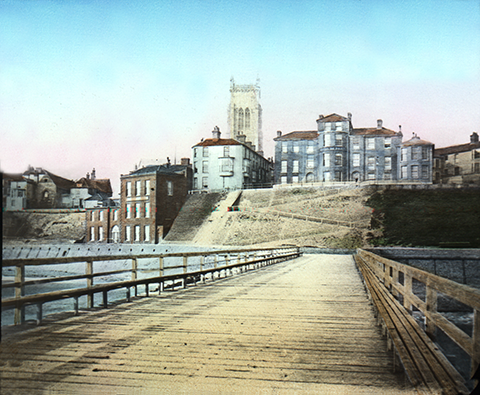 Cromer jetty, about 1880. Cromer, on an exposed coastline, has had jetties and piers from medieval times. This view looks up towards the original Hotel de Paris, on the clifftop.
Cromer jetty, about 1880. Cromer, on an exposed coastline, has had jetties and piers from medieval times. This view looks up towards the original Hotel de Paris, on the clifftop.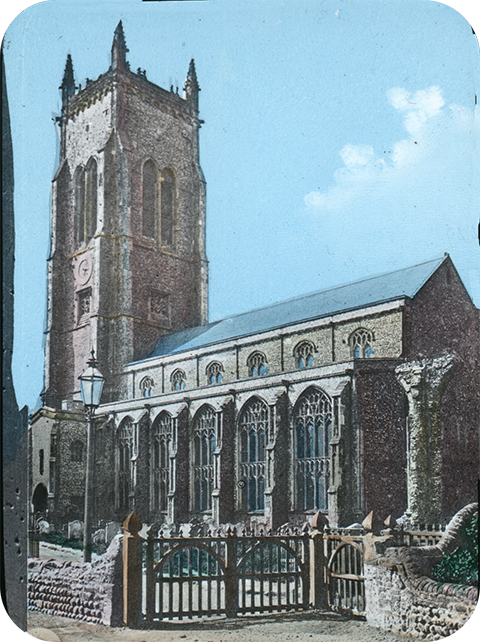 Cromer church is over 50 metres tall. This slide, from about 1880, illustrates the period when it was being restored, before the chancel was rebuilt.
Cromer church is over 50 metres tall. This slide, from about 1880, illustrates the period when it was being restored, before the chancel was rebuilt.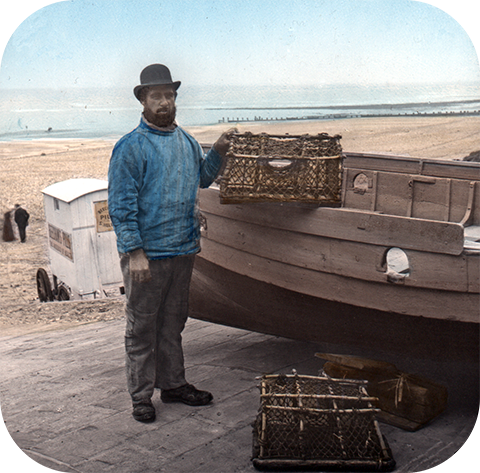 Cromer is perhaps best known for its crabs, so a fisherman, with one of the newly introduced crab pots, was the natural choice for a picture.
Cromer is perhaps best known for its crabs, so a fisherman, with one of the newly introduced crab pots, was the natural choice for a picture.All slides of this type were taken as photographs, and a negative produced. The negative would of course have been on a glass plate. An enlarger - or perhaps we should in this case say a reducer - was used to print the picture as a positive on a three and a quarter inch glass plate. This image would be in black and white. Some lanternists would then hand colour their own slides; the Cromer collection seem to have been sent to Hughes, one of the lantern supply companies, for painting. The use of a professional company did of course result in a fairly standard form of painting on such slides - and occasionally the wrong colour being used. It also ensured that all the slide had nice blue skies!
In general the slides in the collection from the 1880s and 1890s are coloured; photographs added to the collection later on are black and white.
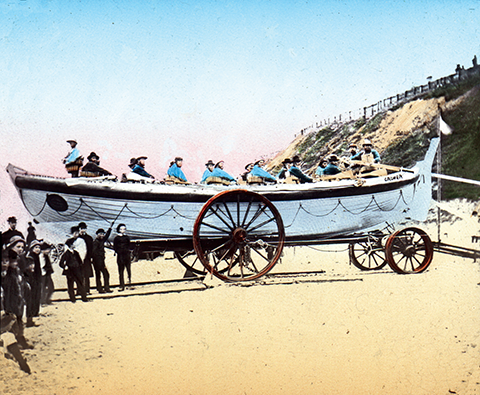 Cromer had the first lifeboat to be placed in the county of Norfolk; this boat, the Benjamin Bond Cabbell served from 1883 to 1902.
Cromer had the first lifeboat to be placed in the county of Norfolk; this boat, the Benjamin Bond Cabbell served from 1883 to 1902.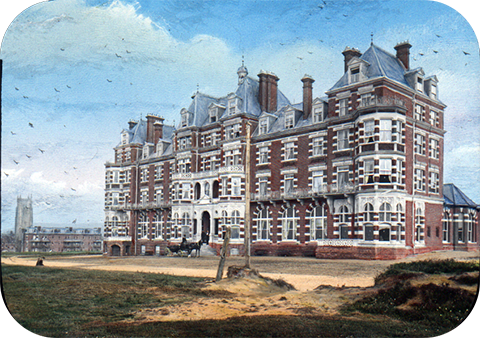 This slide would have been added to the collection about 1895, the year the hotel was completed. It was the key property on the land on the west cliff which had been laid out for development.
This slide would have been added to the collection about 1895, the year the hotel was completed. It was the key property on the land on the west cliff which had been laid out for development.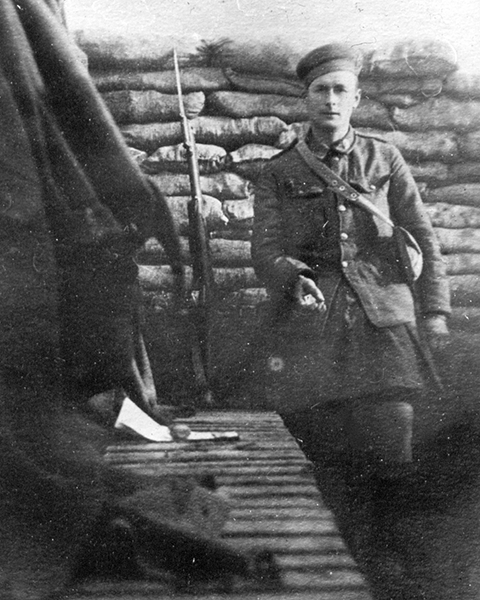 Alfred Salter senior's first son was also Alfred. He had emigrated to Canada before the First World War but came back to Europe to serve in a Canadian regiment. Alfred senior comments that the 1916 negative for this slide had been sent to Canada and then back to Cromer before it was developed.
Alfred Salter senior's first son was also Alfred. He had emigrated to Canada before the First World War but came back to Europe to serve in a Canadian regiment. Alfred senior comments that the 1916 negative for this slide had been sent to Canada and then back to Cromer before it was developed.
